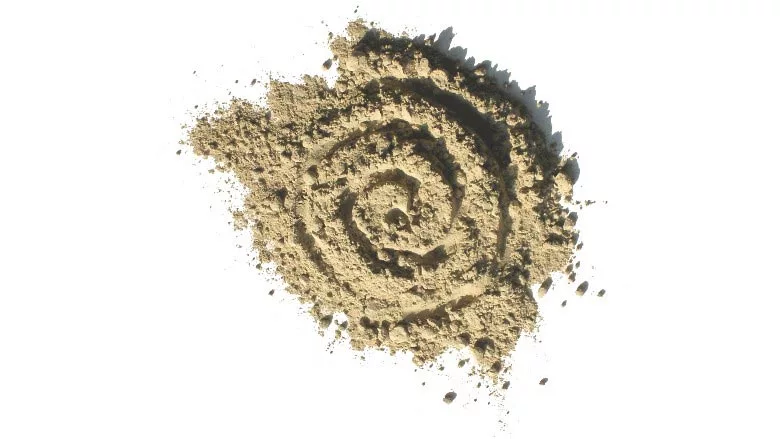Tips for Estimating Rod Pullback Time in HDD
Start with Calculating Volume of Horizontal Bore

Bentonite forms the basis of most drilling fluids, but operators can also add an array of polymers and other additives depending on project geology.
Source: CETCO Drilling Products
Providing technical assistance on a horizontal directional drilling project when the contractor pulls back pipe may seem like a drawn-out process. Depending on bore length and diameter, it may take a few hours or a full day (or more). The repetition of the action of rod after rod returning home feels slow.
In reality, drillers have a common tendency to pull back too fast, which can result in a collapsed hole or stretched pipe. A simple formula can help you calculate pullback speed, but first you need to know your hole volume:
hole diameter² ÷ 24.5 = volume in gallons per foot
Let’s run an example with an 8-inch back ream and a 200-foot bore. You would calculate:
(8 x 8) ÷ 24.5 = 2.61 gals./ft.
For a 200-foot bore, that multiplies out to 522 gallons (based on a 1:1 ratio).
Once you calculate volume, soil type helps determine the fluid required to keep the hole full and effectively transport cuttings out. The soil type also determines the composition of the fluid. In the real world, different soil types require varying fluid volumes and, potentially, very different mixes. Operators can address the needs of a given project’s geology with any suitable combination of bentonite, polymers and additives.
In sand, we recommend a fluids volume of two to three times the borehole volume. A drilling fluid designed for sand will typically contain a combination of soda ash, bentonite, polyanionic cellulose (PAC) polymers and suspension additives to minimize fluid loss while effectively cleaning the hole. Clay conditions require a fluids volume three to five times the hole volume. In clay, the fluids will have a specific mix of components to reduce swelling and bit balling, and effectively evacuate cuttings without bridging or blinding off the hole.
Back to our sample hole, sandy conditions dictate a fluids volume of two to three times hole volume. For this example, let’s double it to 1,044 gallons:
(2.61 gals./ft. x 2) 200 feet = 1,044 gallons of fluid
In this case, we can see that each 10-foot drill stem would require 52.2 gallons:
(2.61 gals./ft. x 2) 10 feet = 52.2 gallons of fluid
Now, using this, we can estimate the amount of time it should take to pull back one 10-foot rod:
- Pumping 20 gpm, between 2.5 and 3 minutes.
- At 30 gpm, between 1.5 and 2 minutes.
- At 40 gpm, between 1 and 1.5 minutes.
The math is simple: 52.2 gallons per rod divided by 30 gpm equals 1.7 minutes, or about 1.5 to 2 minutes per rod. Of course, when calculating pumping rate, be sure to consider fluid viscosity. Higher-viscosity fluids reduce the pumping rate.
Knowing your pullback times is extremely important in successfully completing the bore. Outrunning your drilling fluids has several potential consequences, including inadvertent returns, collapsed bores or stretched pipe.
Knowing your pullback times is extremely important in successfully completing the bore. Outrunning your drilling fluids has several potential consequences, including inadvertent returns, collapsed bores or stretched pipe. After identifying soil conditions, mixing the proper drilling fluid and completing the perfect pilot hole, pullback should be easy. The last step? Provide the time needed, when pulling back pipe, to keep the hole full of fluid. This ensures adequate pressure against the filter cake to hold the hole open, as well as effective cuttings removal. Rushing this step can be a mistake.
In my mud schools, I talk about being sick and picking up your prescription at the drug store. Would you bring it home and not take it? Not if you want results! The same advice applies to knowing your hole volumes. Once you know that information, why would you not use it to estimate your pullback times so you don’t outrun your drilling fluid? Slowing down and pulling back at the proper speed saves you time and money.
Looking for a reprint of this article?
From high-res PDFs to custom plaques, order your copy today!

